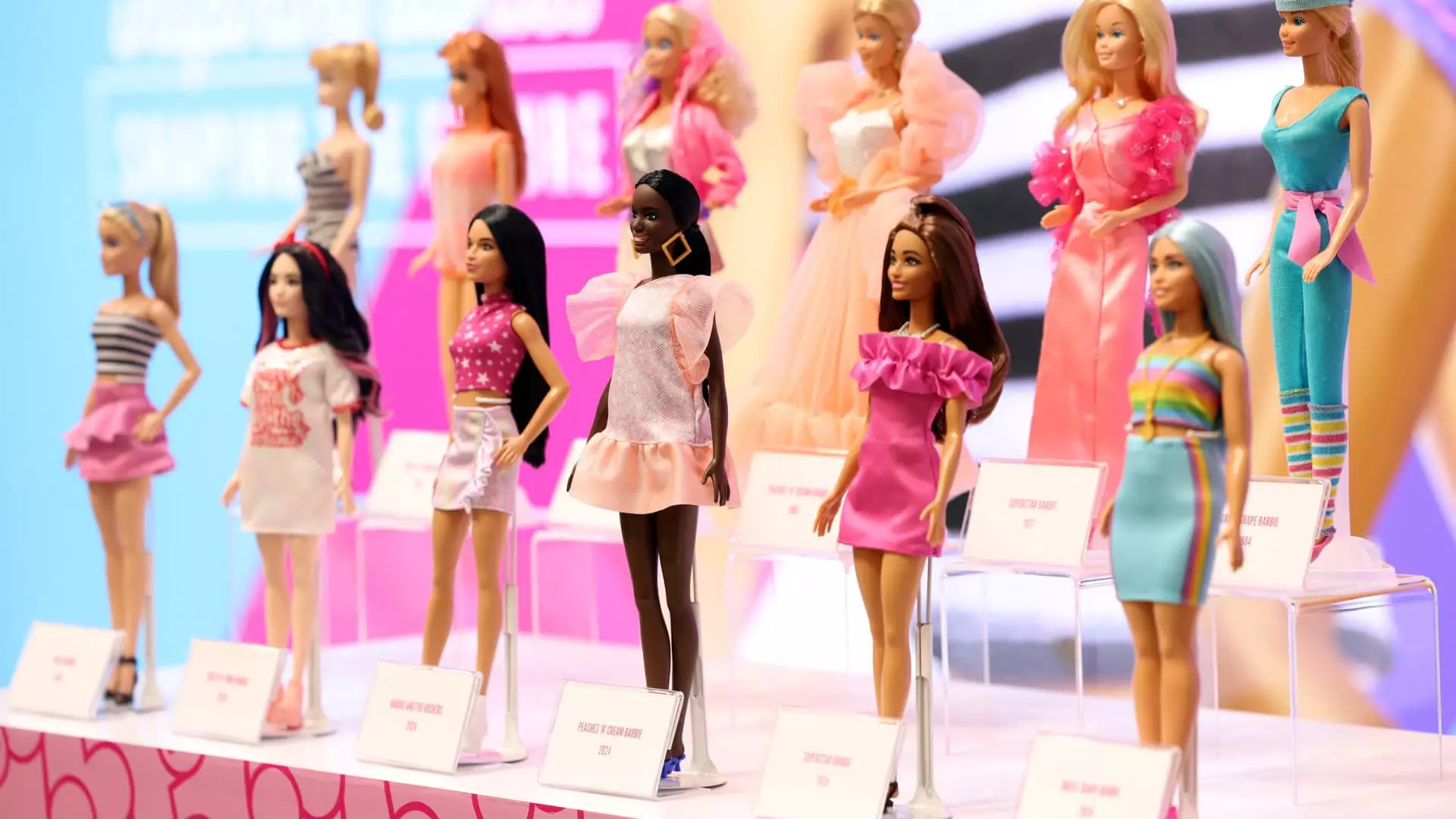In a world increasingly shaped by global trade dynamics, toy manufacturing giant Mattel finds itself navigating choppy waters as President Donald Trump’s administration imposes new tariffs. The decision to implement a 10% tariff on Chinese goods came into effect recently, with additional planned tariffs on Mexican imports temporarily halted as a negotiation tactic. This evolving situation creates a complex environment for Mattel, a company that relies heavily on overseas production to supply its beloved brands like Barbie and Hot Wheels.
With approximately 40% of its products manufactured in China, Mattel faces significant challenges. The recent shift in governmental policy brings the realities of international trade front and center, exposing companies to new costs and risks. This scenario is not just about tariffs but rather the implications they carry for profitability, consumer prices, and the broader toy industry landscape.
During a recent earnings call, Mattel’s finance chief, Anthony DiSilvestro, outlined the company’s approach to minimizing the impact from tariffs. Echoing sentiments prevalent throughout the retail sector, DiSilvestro emphasized a “range of mitigating actions” that would involve both supply chain adjustments and potential price increases. However, striking the right balance is crucial; they aim to consider both retail partnerships and consumer needs, highlighting that price hikes are not taken lightly.
The strategy proposed may seem sensible on the surface, but it raises questions about the potential for backlash from consumers. In an era where consumers are already price-sensitive, any increase could lead to a decline in sales, especially for a discretionary product like toys. Toy companies typically operate on thin margins, and any additional costs could trickle down to the consumers, leading to broader repercussions for Mattel’s position within an already competitive market.
The consensus among economists is clear: tariffs will likely lead to higher prices. To implement a price increase is to tread on shaky ground, as it not only affects consumer perception but could also drive them toward more economically viable alternatives offered by competitors. The hesitation that comes from the threat of losing market share to rivals underscores the importance of consumer sentiment in pricing strategies.
Given that a significant percentage of toy sales happen during holiday seasons, any disruptions in pricing strategy could spell disaster. Parents and gift-givers might opt for less expensive options or postpone purchases, thus reducing overall sales volume. The implications are dire: a triple threat of tariffs, potential production shifts, and consumer pushback could jeopardize Mattel’s status as a market leader.
One avenue that Mattel is exploring involves adjusting its supply chain to minimize costs associated with tariffs. Interestingly, the company has already tapped into a diversified manufacturing strategy, with production operations spread across seven different nations. This multi-national approach provides the flexibility needed to shift production elements around in response to changing governmental policies.
However, it remains to be seen whether such maneuvers would be sufficient to offset the impending costs brought on by tariffs. With a significant portion of their current production footprint still anchored in China, the transition to new manufacturing hubs will require time, investment, and managerial effort. Moreover, sourcing from Mexico, which also faces uncertainty concerning tariffs, hints at future challenges.
Looking ahead to 2027, Mattel has set ambitious goals to further reduce its reliance on both Mexico and China to just over 25% of total global production. This anticipated diversification signals a proactive approach to mitigate risk. While this may alleviate some immediate pressures, the broader implications of increased tariffs and the likelihood of further trade measures linger in the air.
As a significant player in the toy industry, Mattel’s strategies may set trends for other companies within the space. Navigating this turbulent climate will require agility and foresight. The timelines tied to these initiatives leave room for uncertainty—yet one thing remains clear: in the wake of tariffs, the landscape for Mattel and its competitors is fraught with challenges that will require innovative solutions and strategic planning.
Mattel stands at a critical juncture dictated by external trade policy shifts and internal strategic alignments. As they consider moves against tariffs and their broader implications on pricing and consumer sentiment, the ongoing planning and adjustments will undeniably shape the future of the company.

